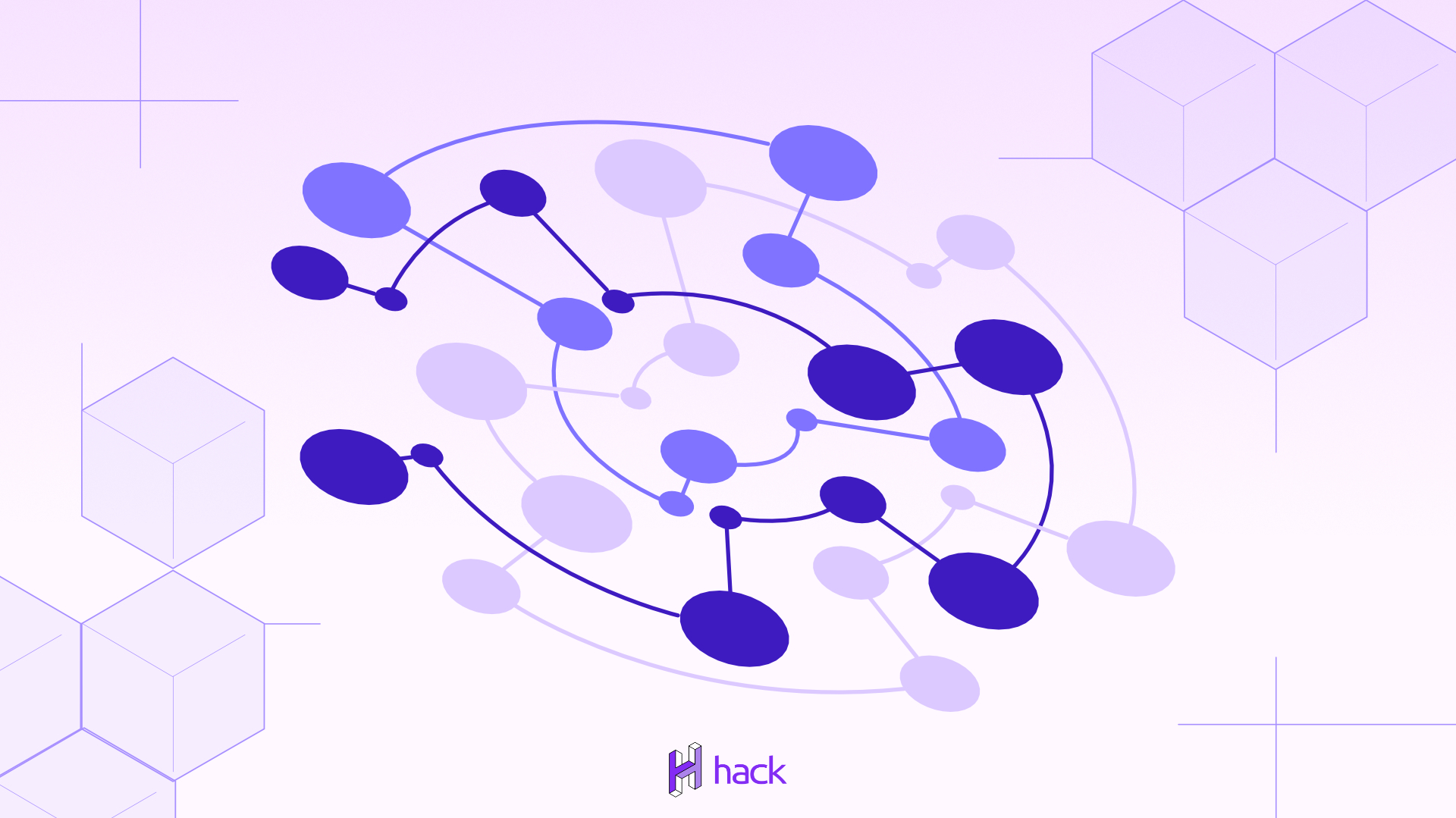The blockchain technology holds great significance in the current digital landscape. Its decentralized nature aims to offer transparency, security, and immutability in various industries, such as finance, healthcare, supply chain, and more. However, as the number of independent blockchain networks continues to grow, the need for interoperability arises. In this article, we will explore the concept of blockchain interoperability, its key components, popular solutions, as well as its challenges and limitations.
Understanding Blockchain Interoperability
Blockchain interoperability refers to the ability of different blockchain networks to communicate and share information with each other. In this way, users can transact value across multiple blockchain platforms using a single wallet and without facing any hindrance.
Defining Blockchain Interoperability
Blockchain technology operates in a distributed environment, where each network has its own set of protocols, consensus mechanisms, and coding languages. These differences hinder the seamless exchange of data and value among these networks. Interoperability aims to bridge these gaps, enabling coordinated communication and synchronization of transactions between different blockchain platforms.
For instance, if a user wants to transfer Bitcoin to someone who holds Ethereum, interoperability allows the two different blockchains to communicate with each other, enabling the transaction to take place seamlessly. Without interoperability, the user would have to convert the Bitcoin to Ethereum, incurring additional transaction fees and time delays.
The Importance of Interoperability in the Blockchain Ecosystem
Interoperability is important in the blockchain ecosystem for several reasons:
- It enables the seamless transfer of value and data across multiple blockchain networks, reducing the risk of fragmentation and promoting standardization and compatibility.
- It promotes healthy competition between different blockchain platforms, which in turn fosters innovation and development of new use cases and applications.
- It offers more flexibility to blockchain users and businesses, enabling them to choose the most suitable blockchain network for their specific use case.
Interoperability also helps to address scalability issues that arise when a single blockchain network becomes congested due to high transaction volumes. By enabling transactions to be processed across multiple blockchain networks, interoperability can help to alleviate network congestion and improve transaction processing speeds.
Moreover, interoperability can help to promote decentralization in the blockchain ecosystem by enabling users to transact value and data across multiple networks without relying on a single central authority. This can help to enhance the security and resilience of the blockchain ecosystem by reducing the risk of a single point of failure.
Overall, blockchain interoperability is a crucial aspect of the blockchain ecosystem that enables seamless communication and exchange of value and data between different blockchain networks. As the blockchain industry continues to grow and evolve, interoperability will become increasingly important in enabling the development of new use cases and applications that can benefit from the unique features and capabilities of different blockchain platforms.
Key Components of Blockchain Interoperability
Interoperability is a crucial aspect of blockchain technology that enables different blockchain networks to communicate with each other. It is achieved through various components, including:
Cross-Chain Communication
Cross-Chain Communication is a critical component of blockchain interoperability. It refers to the exchange of data and value between two different blockchain networks. For instance, a user might wish to transact value from Bitcoin to Ethereum. Cross-chain communication enables this exchange by allowing the two networks to communicate and verify the transaction. This process is made possible through the use of specialized protocols that facilitate the transfer of data between different blockchain networks.
Cross-chain communication has numerous benefits, including increased liquidity, reduced transaction costs, and enhanced security. It allows users to access a broader range of assets and services, which were previously unavailable due to the limitations of a single blockchain network.
Atomic Swaps
Atomic swaps are another critical component of blockchain interoperability. It is a secure mechanism for exchanging two different cryptocurrencies without the need for a third party, such as a centralized exchange. Atomic swaps are executed through smart contracts, which ensure that the transaction is only completed if both parties fulfill their obligations.
Atomic swaps have significant advantages over traditional exchanges. They eliminate the need for intermediaries, reducing transaction costs and increasing transaction speed. Additionally, they enhance security by eliminating the risk of hacking or theft associated with centralized exchanges.
Decentralized Exchanges
Decentralized exchanges (DEXs) are another essential component of blockchain interoperability. DEXs refer to platforms that allow users to trade cryptocurrencies in a peer-to-peer network, without the need for intermediaries. DEXs operate on the principle of decentralized protocols and smart contracts, which enable seamless interaction between different blockchain platforms.
DEXs offer several benefits, including enhanced security, reduced transaction costs, and greater transparency. They eliminate the need for intermediaries, reducing the risk of hacking or theft associated with centralized exchanges. Additionally, they provide users with greater control over their assets, enabling them to trade directly with other users on the network.
In conclusion, blockchain interoperability is a critical aspect of blockchain technology that enables different blockchain networks to communicate with each other. Cross-chain communication, atomic swaps, and decentralized exchanges are key components of blockchain interoperability that offer numerous benefits, including increased liquidity, reduced transaction costs, enhanced security, and greater transparency.
Popular Blockchain Interoperability Solutions
Blockchain technology has revolutionized the way we think about data storage and transfer. However, the lack of interoperability between different blockchain networks has been a major challenge for the growth and adoption of this technology. Several blockchain interoperability solutions have been developed to address this challenge, making it possible to exchange value and data across different blockchain networks. Here are some of the most popular blockchain interoperability solutions:
Cosmos Network
The Cosmos Network is a decentralized network of independent blockchains that operate using the Tendermint consensus algorithm. With Cosmos, users can exchange value and data across different blockchain networks using the Inter Blockchain Communication (IBC) protocol. This protocol enables secure and efficient communication between different blockchains, making it possible to transfer assets and data seamlessly.
Cosmos also offers a range of tools and services for developers, including the Cosmos SDK, which allows developers to build their own customized blockchain networks. This flexibility and scalability make Cosmos an attractive option for businesses and organizations looking to leverage blockchain technology.
Polkadot
Polkadot is a multi-chain platform that enables cross-chain communication and interoperability. Polkadot uses the Substrate framework, which allows developers to build their own customized blockchain networks by selecting the necessary components, such as consensus mechanisms, token economies, and more. This modular approach makes it easier to create and deploy new blockchain networks, while also ensuring interoperability between different networks.
Polkadot also uses a unique governance model, where token holders can vote on changes to the network’s protocol and policies. This ensures that the network remains decentralized and transparent, while also allowing for rapid innovation and development.
ICON
ICON is a decentralized network that enables the exchange of value and data between independent blockchain networks. ICON uses the Loop Fault Tolerance (LFT) consensus algorithm, which ensures fast and secure transactions. The ICON network also supports smart contracts and decentralized applications, making it a versatile platform for developers and businesses.
ICON has a strong focus on interoperability, with the goal of connecting different blockchain networks and creating a more seamless ecosystem for blockchain technology. The ICON team has also developed a range of tools and resources for developers, including the ICON SDK and ICONex wallet.
In conclusion, blockchain interoperability is an important area of development for the blockchain industry. With solutions like Cosmos, Polkadot, and ICON, it is now possible to exchange value and data across different blockchain networks, unlocking new possibilities for innovation and collaboration.
Challenges and Limitations of Blockchain Interoperability
Despite its numerous benefits, blockchain interoperability still faces several challenges. However, with the right solutions and strategies, these challenges can be overcome. Here are some of the challenges and limitations of blockchain interoperability:
Scalability Issues
Interoperability requires large amounts of computing power and resources, which could lead to scalability issues. Blockchain networks are already struggling with scalability, as the number of transactions and users continues to grow. Adding interoperability to the mix could exacerbate these issues, resulting in slow transaction speeds and higher fees. However, there are several solutions being developed to address these scalability issues, such as sharding and off-chain scaling solutions.
Security Concerns
Interoperability creates new points of vulnerability and attack vectors, which could lead to security breaches and loss of funds. Thus, it is crucial to ensure that interoperability solutions are secure and robust. This requires a comprehensive approach that includes secure coding practices, regular security audits, and ongoing monitoring and testing. Additionally, blockchain networks should collaborate and share information to identify and mitigate potential security threats.
Standardization and Compatibility
Standardization and compatibility are important for achieving interoperability, as different blockchain networks need to adhere to common protocols and standards. However, achieving standardization and compatibility can be challenging, as different blockchain networks have different architectures, consensus mechanisms, and programming languages. Thus, it is vital to promote interoperability standards and encourage compatibility between different blockchain platforms. This can be achieved through open-source development, cross-chain communication protocols, and industry collaboration.
Overall, blockchain interoperability has the potential to revolutionize the way we use and interact with blockchain technology. However, to fully realize this potential, we must address the challenges and limitations of interoperability and work towards developing robust and secure solutions.
Conclusion
In conclusion, interoperability is a crucial component of the blockchain ecosystem that enables the seamless exchange of data and value between independent blockchain networks. It promotes standardization, innovation, and flexibility, while also addressing several challenges and limitations. Therefore, it is essential to continue exploring and developing interoperability solutions that promote the healthy growth and adoption of blockchain technology.



